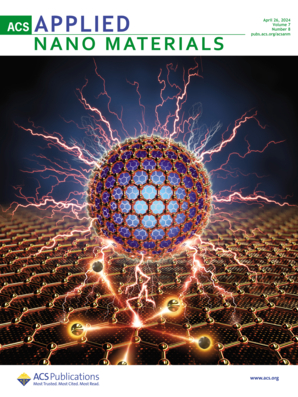Antimicrobial Efficacy of Cubic, Single-Leaf, and Flower-like Zeolitic Imidazolate Frameworks
IF 5.3
2区 材料科学
Q2 MATERIALS SCIENCE, MULTIDISCIPLINARY
引用次数: 0
Abstract
Zeolite imidazolate frameworks (ZIFs) have been widely used in drug delivery and antibacterial applications due to their highly controllable structure and pore size. However, the relationship between the structure of ZIFs and their antibacterial efficacy has not been fully elucidated. In this study, three ZIFs with uniform sizes and specific morphologies were synthesized: cubic (Z-8), leaf-like (Z-L), and flower-like (FZ-L). Flow cytometry was employed to assess the effects of these materials on Bacillus subtilis and Escherichia coli at different concentrations and exposure times. Results showed that sharp-edged ZIFs possess enhanced antibacterial effects. Specifically, FZ-L exhibited the lowest minimum inhibitory concentration of 400 μg/mL and a minimum bactericidal concentration of 20 μg/mL, which can kill bacteria effectively and rapidly. Further study on the antibacterial mechanisms showed that these materials do not produce reactive oxygen species (ROS) themselves but induce ROS production in bacteria and accelerate bacterial death. Biocompatibility studies suggested that ZIFs have minimal toxicity to human cells, indicating their potential in biomedical applications. This research provides insights into the antibacterial mechanisms of ZIFs, which can support their development for antimicrobial use.

立方体、单叶和花状沸石咪唑啉框架的抗菌功效
沸石咪唑啉框架(ZIFs)因其结构和孔径高度可控,已被广泛应用于药物输送和抗菌领域。然而,ZIFs 的结构与其抗菌功效之间的关系尚未完全阐明。本研究合成了三种具有统一尺寸和特定形态的 ZIF:立方体(Z-8)、叶片状(Z-L)和花朵状(FZ-L)。流式细胞仪用于评估这些材料在不同浓度和暴露时间下对枯草杆菌和大肠杆菌的影响。结果表明,尖角 ZIF 具有更强的抗菌效果。具体而言,FZ-L 的最低抑菌浓度为 400 μg/mL,最低杀菌浓度为 20 μg/mL,能有效、快速地杀死细菌。对抗菌机制的进一步研究表明,这些材料本身不产生活性氧(ROS),但能诱导细菌产生 ROS 并加速细菌死亡。生物相容性研究表明,ZIFs 对人体细胞的毒性极小,这表明它们具有生物医学应用潜力。这项研究深入揭示了 ZIF 的抗菌机制,有助于开发其抗菌用途。
本文章由计算机程序翻译,如有差异,请以英文原文为准。
求助全文
约1分钟内获得全文
求助全文
来源期刊

ACS Applied Nano Materials
Multiple-
CiteScore
8.30
自引率
3.40%
发文量
1601
期刊介绍:
ACS Applied Nano Materials is an interdisciplinary journal publishing original research covering all aspects of engineering, chemistry, physics and biology relevant to applications of nanomaterials. The journal is devoted to reports of new and original experimental and theoretical research of an applied nature that integrate knowledge in the areas of materials, engineering, physics, bioscience, and chemistry into important applications of nanomaterials.
文献相关原料
| 公司名称 | 产品信息 | 采购帮参考价格 |
|---|
 求助内容:
求助内容: 应助结果提醒方式:
应助结果提醒方式:


